Brazil Video Surveillance Market Size
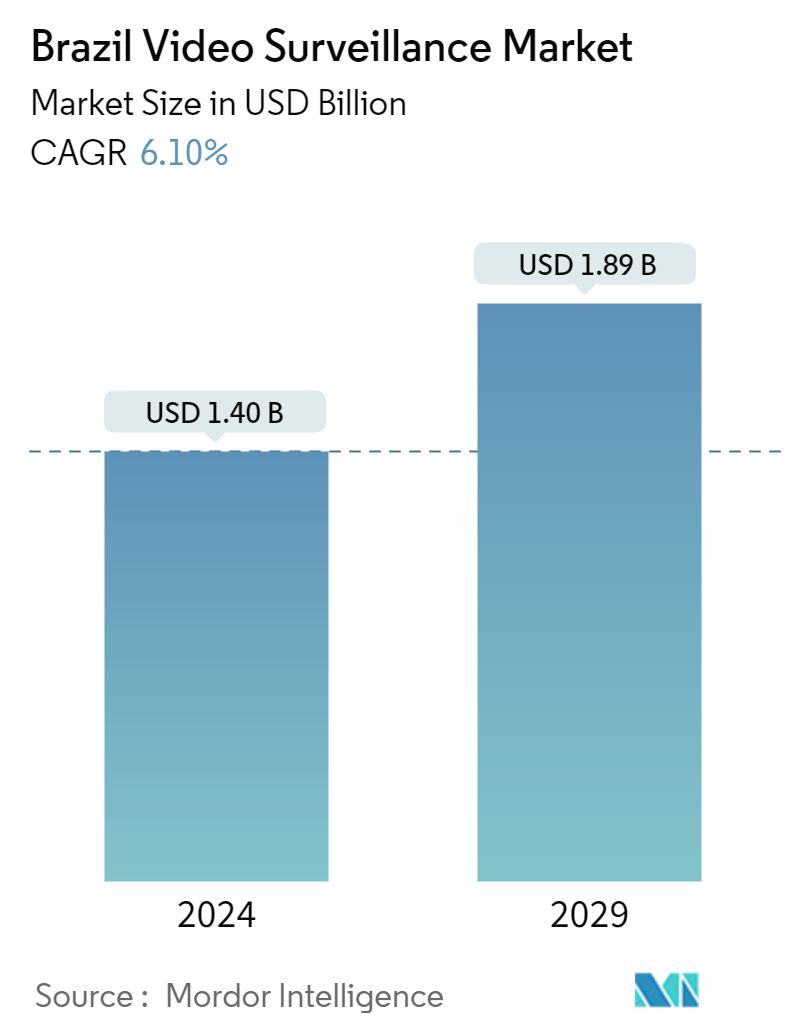
| Study Period | 2019 - 2029 |
| Base Year For Estimation | 2023 |
| Market Size (2024) | USD 1.40 Billion |
| Market Size (2029) | USD 1.89 Billion |
| CAGR (2024 - 2029) | 6.10 % |
| Market Concentration | Low |
Major Players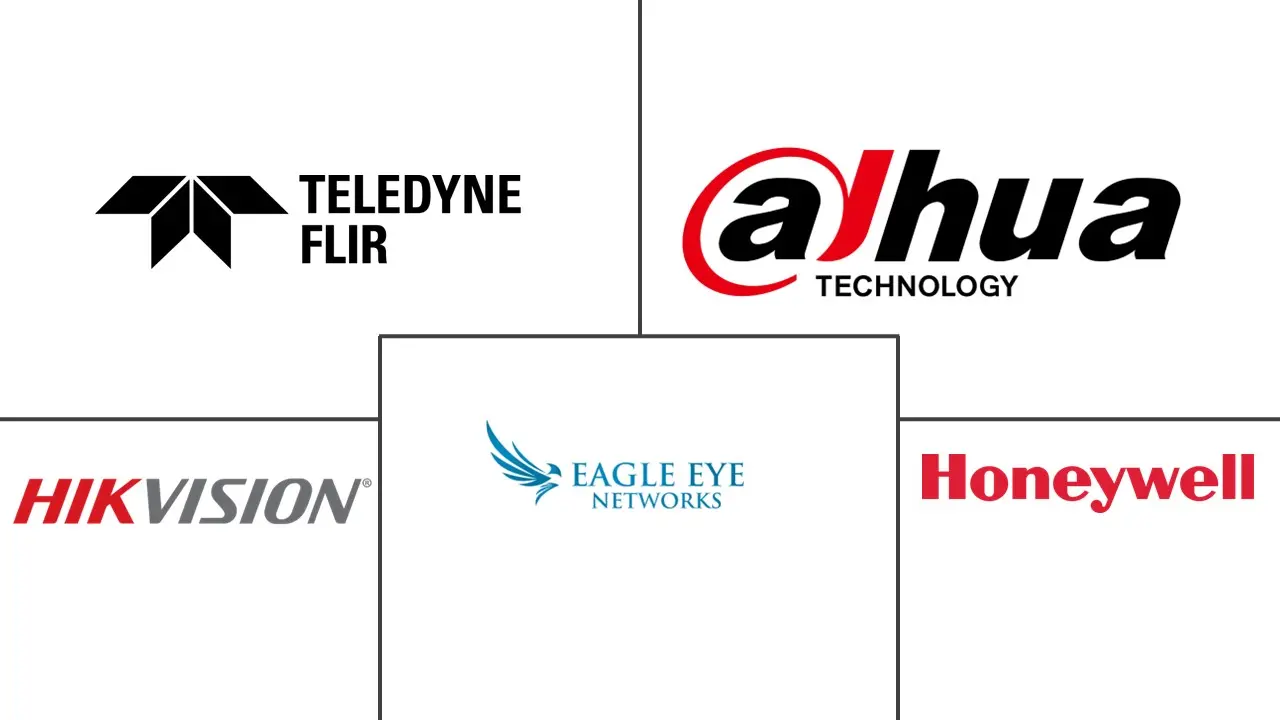
*Disclaimer: Major Players sorted in no particular order |
Brazil Video Surveillance Market Analysis
The Brazil Video Surveillance Market size is estimated at USD 1.40 billion in 2024, and is expected to reach USD 1.89 billion by 2029, growing at a CAGR of 6.10% during the forecast period (2024-2029).
Latin America emerges as a fertile ground for the proliferation of surveillance cameras, notably in retail and small-scale private security settings like homes, condominiums, and shopping malls. The Brazilian video surveillance market, which has seen consistent growth since the 1980s, is now witnessing a surge in activity. This growth mirrors the rising interest in this technology, not only in the security and personal safety sectors but also in real estate.
- Historically, the focus of surveillance in Brazil was on public spaces like parks, squares, and bustling commercial streets or semi-public venues such as malls, sports centers, and event arenas. However, recent years have seen a shift. The security market is expanding, driven by the gentrification of sizable residential zones in both medium-sized cities and metropolitan regions.
- Several factors have fueled this surge in Brazil: a lack of specific legislation governing surveillance system usage, limited public discourse on the broad deployment and implications of such technology, and a rising urban fear that's reshaping how residents navigate and inhabit these urban landscapes.
- Looking ahead, Brazil's governmental security initiatives for the next decade are ambitious. They aim to bolster border control, combat organized crime, revamp the prison system, establish a national public security information network, and intensify efforts against drug trafficking. These initiatives collectively present significant growth avenues for the country's video surveillance market.
- Illustrating this trend, in June 2023, the Federal District Court in Brazil upgraded its security infrastructure. It adopted a district-wide solution, deploying cameras with advanced video analytics (such as perimeter, loitering, and forensic search) from Axis Communications and Bosch. These cameras were seamlessly integrated with Milestone's Xprotect Expert, an open-platform video management software (VMS) chosen for its ease of monitoring, prevention, and incident investigation. Notably, Milestone's VMS was favored for its flexibility, offering a broader range of technology choices. The upgraded system has already proven its worth, preventing defendants from escaping during trials and aiding in the identification of potential criminals within the court's premises.
Brazil Video Surveillance Market Trends
IP Cameras Significantly Gaining Popularity
- The demand for advanced surveillance solutions is surging in today's security landscape. Surveillance cameras, crucial for public safety and protecting infrastructure, face challenges, with video quality topping the list. Innovative video enhancement solutions are now pivotal, enabling security experts to secure clear, stable video streams, even in challenging environments.
- With a focus on poverty, sustainable development, and global governance, Brazil is set to shine a spotlight on innovation and digital transformation in 2024. Opensignal reports that, across Brazilian states, most are witnessing significant enhancements in 5G availability. Notably, Amapá and Acre stand out with the highest absolute year-on-year increases, each boasting a 5.5 percentage point rise. These states, alongside Distrito Federal and Rio de Janeiro, lead the pack in 5G availability. This heightened focus is driving the increased adoption of IP cameras in Brazil's security sector.
- In a notable move, São Paulo, in July 2023, announced plans to deploy thousands of surveillance cameras equipped with facial recognition. This initiative, part of the broader Smart Sampa project, underscores Brazil's push toward modern surveillance. São Paulo, with a population of 12 million, is the largest city in the Southern Hemisphere. By 2024, the city aims to install up to 20,000 cameras, integrating an equal number of third-party and private cameras into its network.
- In 2023, Axis and Vivo forged a partnership, focusing on enhancing quality and security while balancing scalability and cost-efficiency. Vivo, when identifying opportunities to modernize its stores, turned to Axis technology. By adopting fisheye cameras, Vivo not only improved image quality but also reduced the number of cameras required. This led to tangible benefits, including fewer licenses, reduced cabling, and savings in switch ports and data storage.
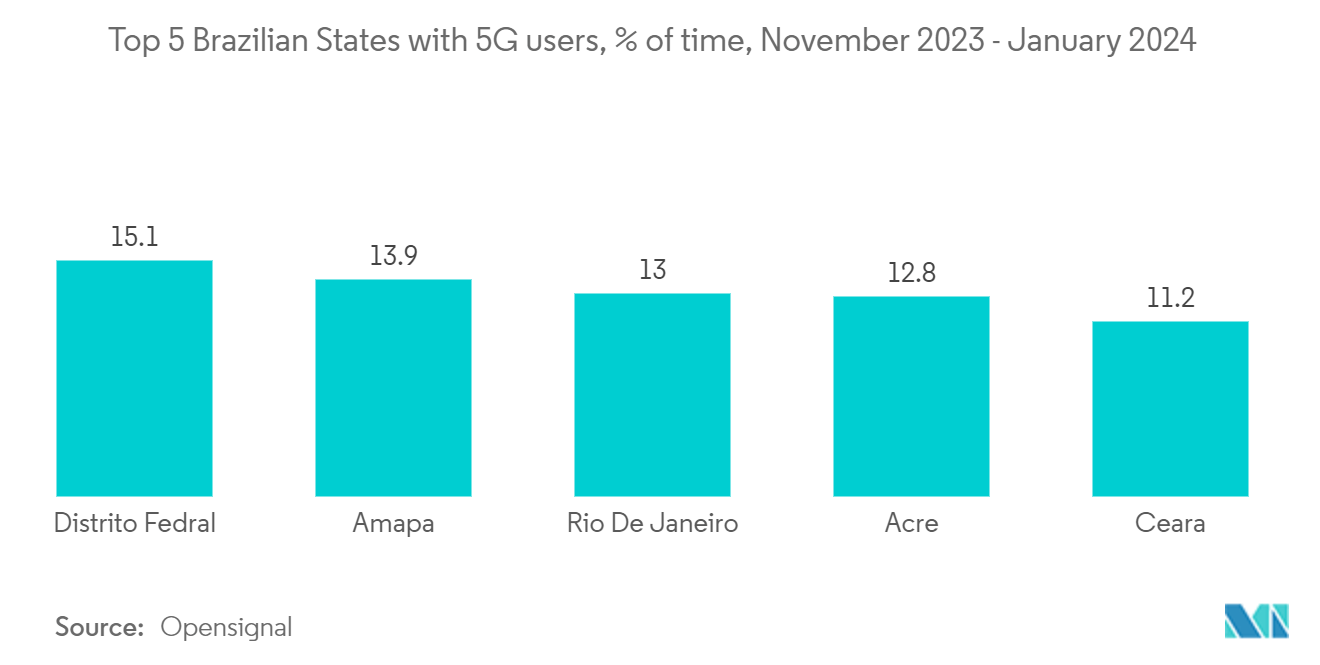
Rising Popularity of Video Surveillance in Commercial Segment
- The migration of people from rural to urban areas is a key driver of demand for commercial properties, especially in major Brazilian cities like São Paulo, Rio de Janeiro, and Brasília. This urban shift, coupled with a growing population, is fueling the need for office spaces, retail hubs, and residential complexes in city centers and their peripheries. As more individuals move to urban areas, the infrastructure must adapt to accommodate the increasing population, leading to a rise in construction and development projects. This trend is not only reshaping the urban landscape but also creating numerous opportunities for investors and developers to capitalize on the growing demand for commercial real estate.
- Furthermore, Brazil's expanding middle class and their heightened spending are boosting the demand for contemporary retail spaces. Responding to this, developers and investors are increasingly focusing on creating innovative retail centers tailored to evolving consumer tastes. Rising disposable income among the middle class has led to a shift in consumer behavior, with more people seeking modern and attractive shopping environments. This has prompted a wave of new retail developments, such as big and spacious shopping malls designed to meet the expectations of a more discerning customer base, offering a mix of dining, shopping, and entertainment options that cater to a range of preferences.
- As of August 2023, the Associação Brasileira de Shopping Centers reported that the Shopping Leste Aricanduva claimed the title of Brazil's largest shopping center, boasting a substantial 248,701 square meters of gross leasable area (GLA). In stark contrast, the runner-up, Shopping Interlagos, lagged significantly behind with a GLA of just 145,000 square meters.
- Given the prevalence of strategies like cash theft, 'sweet-hearting,' and return fraud in such highly populous areas, video surveillance plays a pivotal role. Leveraging AI and analytics, this technology empowers mall and store owners to not only detect suspicious activities but also swiftly respond, identify culprits, and fortify against future incidents. Real-time alerting features ensure heightened situational awareness, enabling proactive responses to potential threats.
- The integration of advanced surveillance systems in retail environments is becoming increasingly essential as it helps maintain security, reduce losses, and enhance the overall shopping experience for customers. By staying ahead of potential security threats, retailers can create a more secure and safer environment for both employees and shoppers, ultimately contributing to the success and sustainability of their businesses.
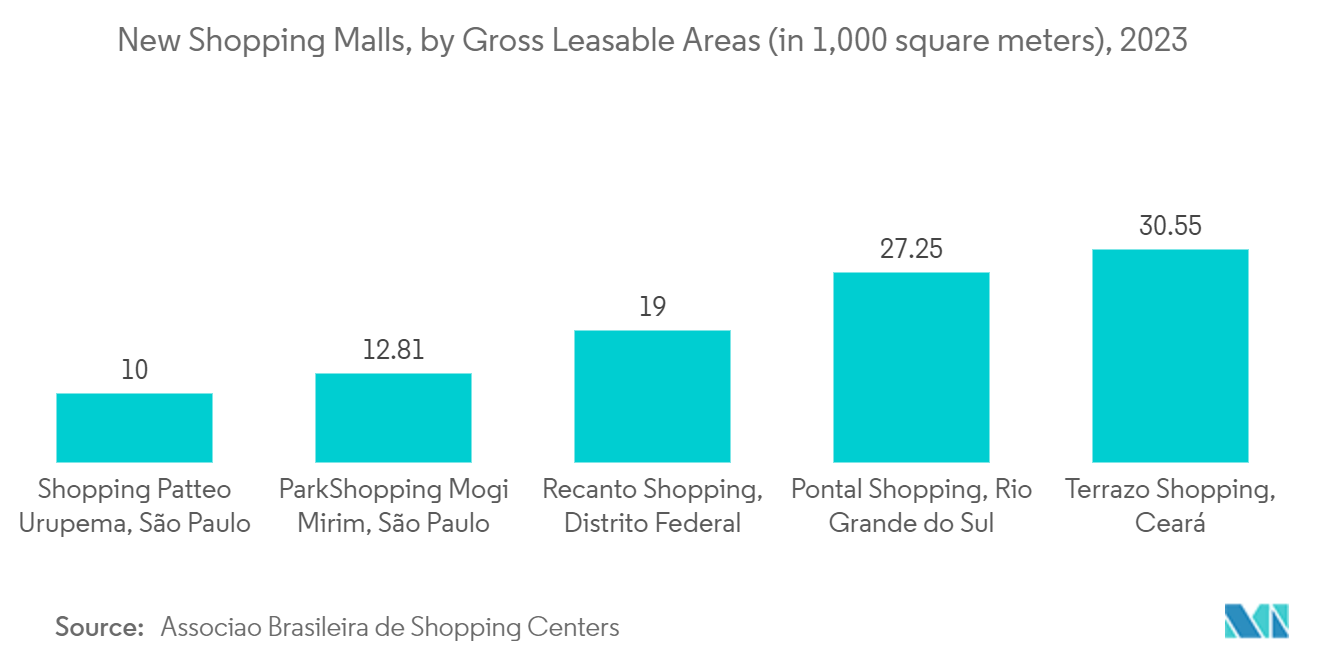
Brazil Video Surveillance Industry Overview
The Brazilian video surveillance market is competitive due to the presence of several vendors. The growing demand further attracts more vendors to the market, intensifying the competition. Vendors are adopting various strategies to strengthen their market presence further, including new product development, mergers, and acquisitions. Some key market players include Eagle Eye Networks, Honeywell Security Group, Teledyne FLIR, and Hikvision.
- July 2024: ZKTeco Brasil showcased an impressive array of innovative solutions at Exposec 2024, spanning from intelligent security systems tailored for condominiums to elevator access control. A standout feature of their exhibit was the unveiling of their latest offering, ZKDigimax, a line focusing on advertising and price management. Boasting advanced technology and novel features, ZKDigimax not only captivated attendees but also resonated with retail experts, signaling a foray beyond the realm of electronic security.
- March 2023: Teledyne FLIR, a division of Teledyne Technologies Incorporated, revealed its participation in the ISC West trade show. At the event, the company plans to unveil its latest lineup of cameras and advanced security solutions. Notably, FLIR is bolstering its array of visible cameras by introducing its inaugural line of AI-powered visible security cameras, led by the FLIR Quasar™ Premium Mini-Dome AI, set to premiere at ISC West.
Brazil Video Surveillance Market Leaders
-
Zhejiang Dahua Technology Co., Ltd.
-
Teledyne FLIR LLC
-
Honeywell International Inc.
-
Eagle Eye Networks, Inc.
-
Hangzhou Hikvision Digital Technology Co., Ltd.
*Disclaimer: Major Players sorted in no particular order
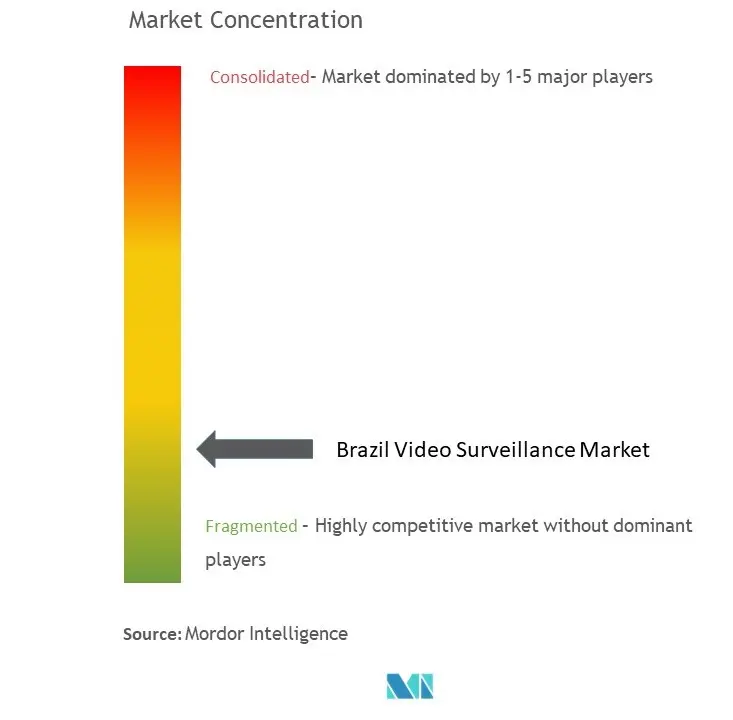
Brazil Video Surveillance Market News
- July 2024: Axis Communications unveiled its latest offering, the AXIS Q1809-LE Bullet Camera. This all-in-one outdoor solution boasts a custom telephoto lens designed for optimal long-distance surveillance, ensuring superior image quality and enhanced forensic capabilities. Axis touts the versatility of the AXIS Q1809-LE, asserting its suitability across diverse applications, ranging from smart cities and airports to stadiums and transportation hubs. Notably, the camera is designed for immediate deployment straight out of the box.
- June 2024: Hikvision, a leading player in the security solutions sector, rolled out a major enhancement to its Heatpro bi-spectrum thermal cameras by incorporating VCA 3.0. This upgrade is not merely cosmetic; it is a strategic move to boost performance, detection capabilities, and accuracy. By integrating VCA 3.0, Hikvision underscores its dedication to cutting-edge security solutions. The latest algorithms in VCA 3.0 mark a leap in processing power and efficiency, heightening the cameras' ability to pinpoint and analyze potential security threats.
Brazil Video Surveillance Market Report - Table of Contents
1. INTRODUCTION
- 1.1 Study Assumptions and Market Definition
- 1.2 Scope of the Study
2. RESEARCH METHODOLOGY
3. EXECUTIVE SUMMARY
4. MARKET INSIGHTS
- 4.1 Market Overview
- 4.2 Industry Value Chain Analysis
-
4.3 Industry Attractiveness - Porter's Five Forces Analysis
- 4.3.1 Bargaining Power of Suppliers
- 4.3.2 Bargaining Power of Consumers
- 4.3.3 Threat of New Entrants
- 4.3.4 Threat of Substitute Products
- 4.3.5 Intensity of Competitive Rivalry
- 4.4 Impact of Macro Economic trends on the market
5. MARKET DYNAMICS
-
5.1 Market Drivers
- 5.1.1 Rising Concern About Security and Safety
- 5.1.2 Advances in Technology, Such as IoT, Artificial Intelligence, and Voice Controlled Assistants
-
5.2 Market Restraints
- 5.2.1 Complex Installation and Setup
6. MARKET SEGMENTATION
-
6.1 By Type
- 6.1.1 Hardware
- 6.1.1.1 Camera
- 6.1.1.1.1 Analog
- 6.1.1.1.2 IP Cameras
- 6.1.2 Software
- 6.1.2.1 Video Analytics
- 6.1.2.2 Video Management
- 6.1.3 Services (VSAAS)
-
6.2 By End-user Vertical
- 6.2.1 Commercial
- 6.2.2 Infrastructure
- 6.2.3 Institutional
- 6.2.4 Defense
- 6.2.5 Residential
7. Competitive Landscape
-
7.1 Company Profiles
- 7.1.1 Zhejiang Dahua Technology Co. Ltd
- 7.1.2 Teledyne FLIR LLC
- 7.1.3 Honeywell International Inc.
- 7.1.4 Eagle Eye Networks Inc.
- 7.1.5 Hangzhou Hikvision Digital Technology Co. Ltd
- 7.1.6 Axis Communications AB
- 7.1.7 Bosch Security Systems Incorporated
- 7.1.8 Samsung Group
- 7.1.9 Verkada Ince
- 7.1.10 Motorola Solutions Inc.
- 7.1.11 Infinova Group
- 7.1.12 Johnson Controls
- *List Not Exhaustive
8. INVESTMENT ANALYSIS
9. FUTURE OF THE MARKET
** Subject To AvailablityBrazil Video Surveillance Industry Segmentation
Video surveillance systems leverage cameras or networks of camera systems and related hardware to capture footage in specific areas for live viewing or recording for later review. These systems transmit footage from cameras to centralized monitoring devices, servers, or cloud storage for future access or analysis.
The Brazilian video surveillance market report is segmented by type (hardware (camera [analog and IP cameras] and storage), software [video analytics and video management software] and services [VSAAS]), and end-user vertical (commercial, infrastructure, institutional, industrial, defense, and residential). The market sizes and forecasts are provided in terms of value (USD) for all the above segments.
| By Type | Hardware | Camera | Analog |
| IP Cameras | |||
| By Type | Software | Video Analytics | |
| Video Management | |||
| By Type | Services (VSAAS) | ||
| By End-user Vertical | Commercial | ||
| Infrastructure | |||
| Institutional | |||
| Defense | |||
| Residential |
Brazil Video Surveillance Market Research FAQs
How big is the Brazil Video Surveillance Market?
The Brazil Video Surveillance Market size is expected to reach USD 1.40 billion in 2024 and grow at a CAGR of 6.10% to reach USD 1.89 billion by 2029.
What is the current Brazil Video Surveillance Market size?
In 2024, the Brazil Video Surveillance Market size is expected to reach USD 1.40 billion.
Who are the key players in Brazil Video Surveillance Market?
Zhejiang Dahua Technology Co., Ltd., Teledyne FLIR LLC, Honeywell International Inc., Eagle Eye Networks, Inc. and Hangzhou Hikvision Digital Technology Co., Ltd. are the major companies operating in the Brazil Video Surveillance Market.
What years does this Brazil Video Surveillance Market cover, and what was the market size in 2023?
In 2023, the Brazil Video Surveillance Market size was estimated at USD 1.31 billion. The report covers the Brazil Video Surveillance Market historical market size for years: 2019, 2020, 2021, 2022 and 2023. The report also forecasts the Brazil Video Surveillance Market size for years: 2024, 2025, 2026, 2027, 2028 and 2029.
Brazil Video Surveillance Industry Report
Statistics for the 2024 Brazil Video Surveillance market share, size and revenue growth rate, created by Mordor Intelligence™ Industry Reports. Brazil Video Surveillance analysis includes a market forecast outlook for 2024 to 2029 and historical overview. Get a sample of this industry analysis as a free report PDF download.



